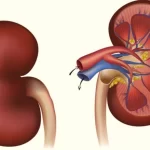Ovary cancer
Ovarian cancer (ovary cancer) begins within the ovaries. Ovaries are reproductive glands found in women. The ovary produces eggs for a copy. Eggs travel from the fallopian tubes to the uterus where the embryo enters and develops into the embryo. The ovary is additionally the most source of female hormones – estrogen and progesterone.
Ovarian cancer is becoming a standard problem in aging women. The probability of developing cancer cells within the ovary is about 4% of all other cancers in women. However, it’s an early growing cancer and is becoming the leading explanation for death in women. About three-quarters of girls are diagnosed within the third or fourth stage.
Types of ovarian cancer
- Epithelial Ovarian Cancer: It is the foremost common sort of Ovary cancer. About 90 percent of the tumors within the ovaries are epithelial.
- Ovarian Teratoma: It is a kind of reproductive cell tumor. Cancerous teratomas are a rare condition and sometimes occur in women aged 20 to 25 years.
- Granulosa tumor of the ovary: It is a kind of stromal tumor and is diagnosed in just 5 women among women with ovarian cancer.
- Primary Peritoneal Cancer: It is a rare cancer of the peritoneum. it’s almost like epithelial cancer, the foremost common sort of Ovary cancer.
- Fallopian Tube Cancer: This cancer is rare. Among the cancers within the female genital system, it’s just one likely.
- Borderline Ovarian Tumours: These tumors are abnormal cells that form within the tissues covering the ovaries. they’re not cancerous and are usually cured with surgery.
Causes of ovarian cancer
Ovarian cancer is caused by irregular and uncontrolled multiplication and division of cells like all other cancer. However, nobody knows what’s the basis explanation for cancer. Following are some factors that increase the danger of ovary cancer:
- Genetics: If any of your close relatives have had Ovary cancer or carcinoma, then you’re at a better risk of getting ovarian cancer.
- Ages: Most cases are found in women older than 65.
Also, Read- Polycystic Ovary Syndrome Causes and Home remedies
A higher number of total lifetime Ovulations
How often a lady ovulates during a lifetime features a relationship with ovarian cancer:
- The more times a lady has conceived, the lower the danger.
- Women who haven’t taken contraception pills have a better risk.
- Women in whom menstruation starts at a young age have an increased risk.
- The risk of menopause is additionally high.
- Reduced fertility or fertility treatment
- Some studies have found that there’s a correlation between decreased fertility treatment and therefore the risk of Ovary cancer, although it’s not known whether the danger increases thanks to decreased fertility or its treatment.
- Breast cancer: Women who are diagnosed with carcinoma have an increased risk of developing ovarian cancer.
- Hormone replacement therapy: Hormone replacement therapy also increases the danger of ovarian cancer.
- More fat: Obesity also increases the danger of cancer like other diseases.
- Endometriosis: Women who are diagnosed with endometriosis have a 30 percent increased risk of Ovary cancer.
Early symptoms of Ovarian cancer
The initial signs and symptoms found during this cancer are very subtle or absent. In many cases, symptoms are often seen for several months before being examined. These cancers are painless within the initial stage. The symptoms of this disease depend upon its subtype. Some symptoms of LMP tumors may include pelvic pain and abdominal distension. the foremost common symptoms of ovary cancer include bloating, abdominal or pelvic pain, discomfort, back pain, irregular menstruation or postmenopausal vaginal bleeding, bleeding during or after sexual activity, loss of appetite, clotting, diarrhea, indigestion, constipation, and urinary Symptoms (including frequent urination and urgency).
Also, Read- 3 Yoga asana Provides Relief From Ovary Pain
Later symptoms of Ovarian cancer
Developing ovarian torsion can cause pain thanks to increased mass. Other symptoms also can be caused by the transfer of the abdomen and cancer. “Sister Joseph Nodule” also can be caused by metastasis of cancer.
Treatment depends on the stage.
Surgery and chemotherapy are generally wont to treat ovarian cancer.
Surgery
- Omentectomy
- Salpingoophorectomy
- Laparotomy
- Hysterectomy
- Pelvic lymph node dissection
- Lymph node dissection
- Retroperitoneal lymph node dissection
Medications
Medical procedure
Dieting in Ovarian Cancer
What to not eat:
- High-fat food
- Protein-rich diet
- Red Meat
- Dairy products
- Caffeine and Carbonated Soda
What to dine in ovarian cancer?
- Leafy vegetables like broccoli, spinach, cabbage, cauliflower, turnip, mustard, etc.
- Colorful vegetables like tomatoes, carrots, etc.
- Whole Grains are a nutritious source of carbohydrates from which vitamins, minerals, fiber, etc. are obtained.
- Soya (soybean, soy milk, soy yogurt, tofu, etc.).
- Ginger
- Green tea
- Linseed
- Ovarian can
Other things to stay in mind
- Eat a healthy diet.
- Do exercise. Laziness can cause discomfort.
- Do not consume alcohol, smoking, tobacco, etc.
- avoid stress.






